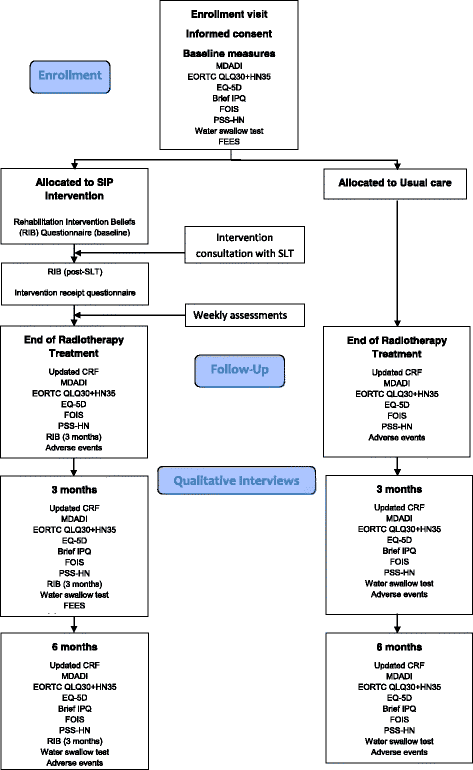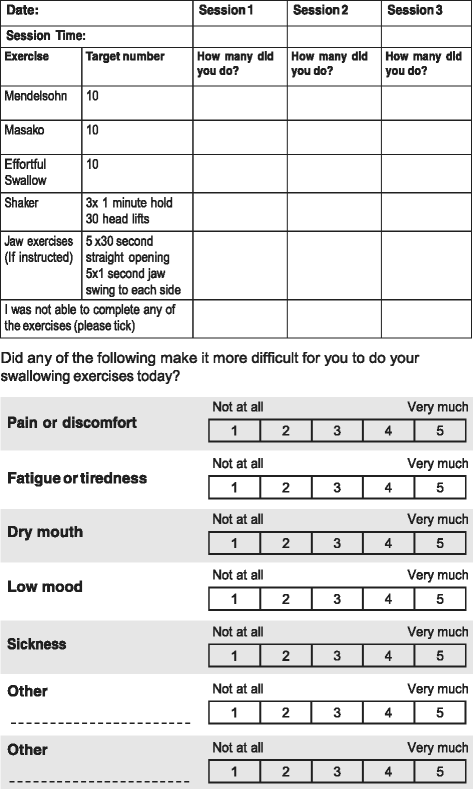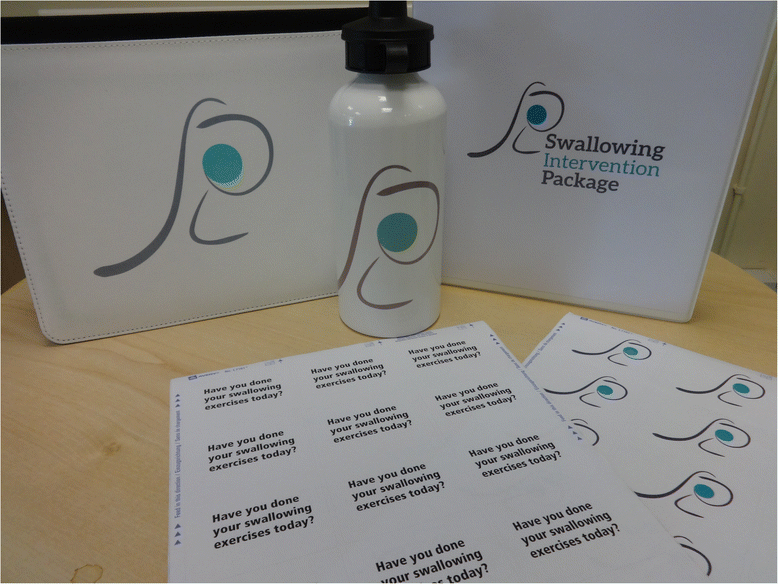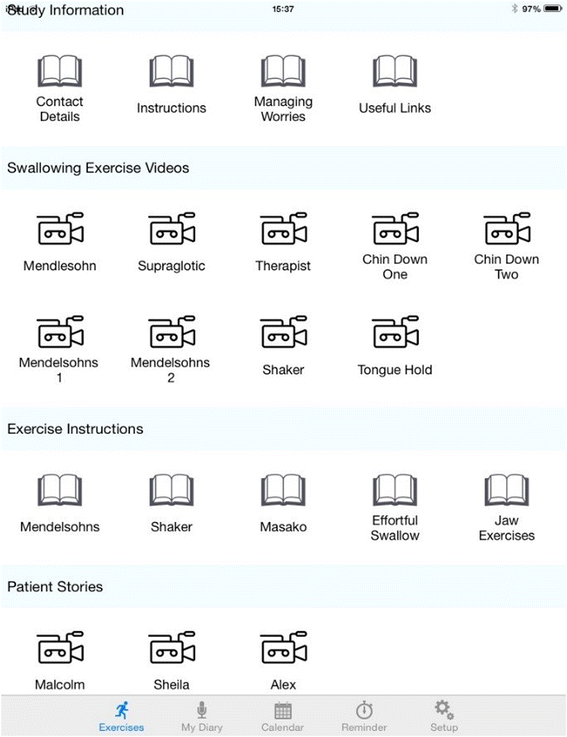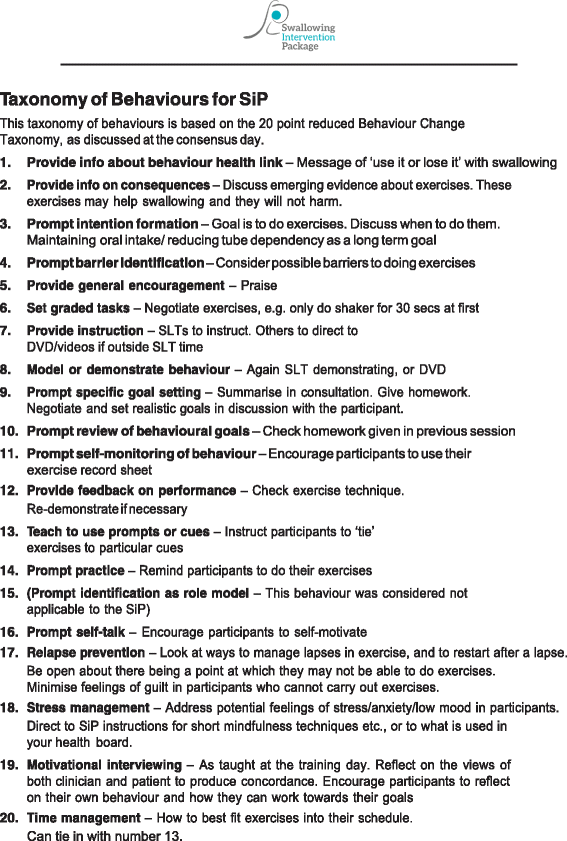Development and feasibility of a Swallowing intervention Package (SiP) for patients receiving radiotherapy treatment for head and neck cancer-the SiP study protocol
- PMID: 27965858
- PMCID: PMC5153906
- DOI: 10.1186/s40814-016-0079-6
Development and feasibility of a Swallowing intervention Package (SiP) for patients receiving radiotherapy treatment for head and neck cancer-the SiP study protocol
Abstract
Background: Head and neck cancer (HNC) is the sixth most common cancer worldwide, and the functional, psychological and social consequences of HNC cancer and its treatment can be severe and chronic. Dysphagia (swallowing problems) affects up to two thirds of patients undergoing combined chemoradiotherapy. Recent reviews suggest that prophylactic swallowing exercises may improve a range of short- and long-term outcomes; however, the importance of psychological and behavioural factors on adherence to swallowing exercises has not been adequately studied. This study aims to develop and test the feasibility of a Swallowing intervention Package (SiP) designed in partnership with patients, speech and language therapists (SLTs) and other members of the head and neck multi-disciplinary team (MDT), for patients undergoing chemoradiotherapy (CRT) or radiotherapy (RT) for head and neck cancer.
Methods/design: This feasibility study uses quantitative and qualitative research methods, within a quasi-experimental design, to assess whether patients will tolerate and adhere to the SiP intervention, which aspects of the intervention can be implemented and which cannot, whether treatment fidelity can be achieved across different contexts, whether study processes and outcome measures will be feasible and acceptable and to what extent the intervention is likely to have an impact on swallowing dysfunction and quality of life. Patients are being recruited from five sites in Scotland and England (three interventions and two usual care). The SLT based in the relevant intervention centre teaches the exercise programme and provides supporting materials. A combination of patient-reported outcome measures (PROMs), adherence measures and clinical swallowing assessments are used prior to intervention (baseline), at the end of treatment, 3 and 6 months post-treatment.
Discussion: This collaborative study has taken a unique approach to the development of a patient-centred and evidence-based swallowing intervention. The introduction of an e-SiP app provides an exploration of the use of technology in delivering this intervention. The study provides an opportunity to examine the feasibility of delivering and participating in a supported swallowing intervention across several different NHS sites and will provide the evidence needed to refine intervention and study processes for a future trial.
Trial registration: NCRI portfolio, 18192 & 20259.
Keywords: Cancer; Dysphagia; Exercise; Head and neck; Intervention; Rehabilitation; Study protocol.
Figures
References
-
- Macmillan Cancer Support. Rich Picture. People with head and neck cancer. 2014 Contract No.: MAC13845_11_14.
-
- Cancer incidence projections for Scotland 2013-2017 publication report. Information Services Division, NHS National Services Scotland; 2015.
-
- van der Molen L, van Rossum MA, Burkhead LM, Smeele LE, Hilgers FJ. Functional outcomes and rehabilitation strategies in patients treated with chemoradiotherapy for advanced head and neck cancer: a systematic review. Eur Arch Otorhinolaryngol. 2009;266(6):889–900. doi: 10.1007/s00405-008-0817-3. - DOI - PubMed
-
- Russi EG, Corvo R, Merlotti A, Alterio D, Franco P, Pergolizzi S, et al. Swallowing dysfunction in head and neck cancer patients treated by radiotherapy: review and recommendations of the supportive task group of the Italian Association of Radiation Oncology. Cancer Treat Rev. 2012;38(8):1033–49. doi: 10.1016/j.ctrv.2012.04.002. - DOI - PubMed
Grants and funding
LinkOut - more resources
Full Text Sources
Other Literature Sources
Research Materials
Miscellaneous

